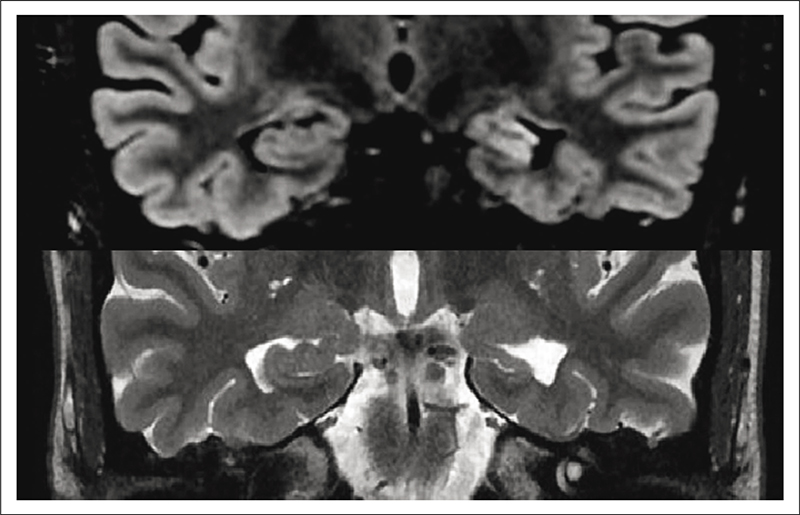Gériatrie et Psychologie Neuropsychiatrie du Vieillissement
MENUHippocampal sclerosis linked to epilepsy: clinical consequences, histopathology and evolution with aging Volume 20, issue 4, 2022-12-01
- Key words: hippocampal sclerosis, epilepsy, aging, eurodegenerative disease
- DOI : 10.1684/pnv.2022.1072
- Page(s) : 515-21
- Published in: 2022
Hippocampal sclerosis is the most frequent etiology of patients with drug-resistant mesial temporal lobe epilepsy, which is the most frequent localization for focal epilepsy. Hippocampal sclerosis is the consequence of a cerebral aggression during early childhood, called the initial precipitating event, the most frequent of which are: febrile seizure, intracranial infection, hypoxia, or cranial trauma. The epilepsy onset usually occurs a few years after this event, with an association of focal temporal seizures and rarer secondarily generalized tonic-clonic seizures. Most patients have a drug-resistant focal epilepsy, with a failure of two different and adequate antiepileptic drugs to achieve seizure freedom. Patients also demonstrated with cognitive impairment, with a typical episodic memory impairment affecting both verbal and non-verbal episodic memory. Cognitive impairment is however more diffuse than the sole episodic memory impairment, and also affects language, visuo-spatial processing, and executive functions. With aging, subjects demonstrated a progressive cognitive decline, that appears to parallel the decline associated with normal aging, but starts earlier and from a lower global cognitive functioning with less cognitive reserve. Patients may therefore reach an impairment threshold sooner than healthy subjects, and are much more vulnerable to any other disease that impairs cognitive functioning. Patients exhibited cortical and subcortical atrophy patterns on volumetric brain MRI similar to normal aging in its distribution, but with an earlier pattern of atrophy (4.5 years sooner in patients than in healthy subjects). Hippocampal sclerosis is associated with amyloid and tau deposits inside the hippocampus, which increases with the subjects’ age. Those deposits pattern is close to the one observed in patients with tau / amyloïd neurodegenerative diseases, which demonstrates a bilateral relationship between epilepsy, hippocampal sclerosis, and neurodegenerative diseases. Clinical consequences of such a relationship are yet to be precisely determined.


